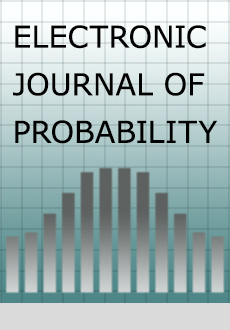Abstract
We introduce an interacting random process related to Ulam's problem, or finding the limit of the normalized longest increasing subsequence of a random permutation. The process describes the evolution of a configuration of sticks on the sites of the one-dimensional integer lattice. Our main result is a hydrodynamic scaling limit: The empirical stick profile converges to a weak solution of the inviscid Burgers equation under a scaling of lattice space and time. The stick process is also an alternative view of Hammersley's particle system that Aldous and Diaconis used to give a new solution to Ulam's problem. Along the way to the scaling limit we produce another independent solution to this question. The heart of the proof is that individual paths of the stochastic process evolve under a semigroup action which under the scaling turns into the corresponding action for the Burgers equation, known as the Lax formula. In a separate appendix we use the Lax formula to give an existence and uniqueness proof for scalar conservation laws with initial data given by a Radon measure.
Citation
Timo Seppäläinen. "A Microscopic Model for the Burgers Equation and Longest Increasing Subsequences." Electron. J. Probab. 1 1 - 51, 1996. https://doi.org/10.1214/EJP.v1-5
Information





